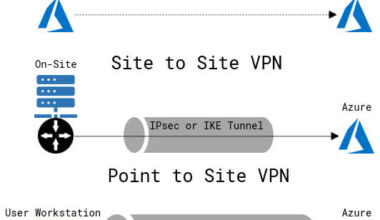The backbone of any modern business is an execution management system. It’s a new piece of software designed to boost productivity across a wide range of functions, sectors, and digital transformation projects.
It’s been fascinating to observe the category as it has grown to become an integral part of the contemporary IT landscape. More intriguing than the technology itself has been the concrete business results it has brought about.
In light of this context, it is beneficial to define execution management by compiling all the relevant information into a single spot. All right, let’s get this party started.
What is an Execution Management System
An EMS is an electronic trading system that individual traders and large institutions use for all kinds of electronic trading.
Basically, the EMS can do trade capture, trade matching, complex order routing, order execution, trade reconciliation, reporting, improved data access, compliance, and order management.
Tools for an Electronic Era
EMSs are a direct result of the electronic trading age. They emerged simultaneously, and day trading increased in the late 1990s and early 2000s.
The systems, first known as direct-market-access (DMA) platforms, started as simple programs that allowed for single-stock trade execution on digital exchanges.
Since then, they have been improved for use in the workplace and are now referred to as execution management systems.
Because EMSs are easier to run on a computer than OMSs, a buy-side trading customer’s offering broker can run them on their behalf from afar.
They are frequently given to consumers “free” by brokers, who fund the upkeep of the systems with soft-dollar payments from the buy side for research and other broker services.
The OMS and EMS are beginning to bleed together, even though they started out as entirely different systems.
Traditional OMS providers like Charles River Development are working on establishing EMS apps as close companions to their main product. They are doing this by adding more EMS-like features, like real-time data, to their OMS platforms.
At the same time, EMS systems are likely to get more customers by adding features like analytics and portfolio staging that were only available in OMSs before.
Order and Execution Management System
Determining the precise responsibilities of an OMS and an EMS and drawing a line between them is likely to be more complicated than we think, even for those working in the financial services sector.
After all, placing orders and presenting results are both permitted by OMS and EMS. Fair enough, the line between an OMS and an EMS is rather new.
In the past, most of the functionality for both order management and execution management was included in a single monolithic program called OEMS (Order and Execution Management System).
Order Management System
An OMS function fundamentally, much like the brain of your investment operations.
Trader orders start their way from this point.
Modeling, P&L, order routing, and execution and trade analytics are all features of contemporary OMSs.
The OMS also makes daily investment tasks easier by automating allocations, providing position verification, and making compliance features better.
Typically employed by investment managers, OMSs primarily focus on front- and middle-office tasks.
When OMSs came out in the middle to late 1980s, asset management companies could keep track of orders made over the phone and improve the way they kept records with paper tickets.
As the Financial Information eXchange (FIX) protocol grew in the early to mid-1990s, OMSs increased their capabilities. This let them safely automate and streamline the order routing process.
These features included electronic order routing to brokers.
Equities are now taken for granted, whereas OMSs used to be equities-focused.
OMSs currently provide functionality for a wide range of asset classes.
What features should an OMS have?
Your OMS needs to be versatile and adjustable because it serves as the focal point of your investment activity.
When the process of starting a trade is slow and inefficient, you lose valuable time and run the risk of making mistakes.
A multi-asset class OMS will let you trade across different types of investments and evaluate classes from the time you come up with an idea until you settle.
Also, it is much more effective to choose a platform that is easy to scale up and grow with you.
Execution Management System
As the name implies, EMSs are made to execute trades quickly.
They do this by giving traders more detailed market information and a wider range of execution choices than an OMS. They do this by combining access to liquidity and execution venues.
With the advent of day trading in the late 1990s, EMSs emerged on the market. They were made to help day traders and sell-side brokers in an electronic market that changes quickly.
Vendors started providing international, multi-asset class platforms, which sparked a surge in interest from the buy-side in EMS products.
An EMS today may provide you with access to detailed, real-time market data and insights support improved trade execution with innovative order types, including conditional orders, list trading, and multi-leg orders, and more.
Additionally, an EMS can quickly and accurately produce execution reports and transactional cost analyses (TCA).
What qualities should an EMS have?
You want your EMS to deliver quick, easy access to global liquidity and give you the resources you need to achieve optimum execution because it serves as your company’s direct market connection.
Look for a system that has automated trading features, such as rules-based order routing and insightful analysis, so you can react to changing market conditions.
Additionally, check to see that your EMS and OMS can provide seamless processes.
Trends in Investment Management: OMS/EMS Integration
As we previously stated, we occasionally hear from people who are interested in an OMS or EMS but are unsure which option is best for them.
Recent business changes have made integrating the two systems a top priority.
As the discussion of integration develops, more investors are becoming confused about where one system begins, and the next one stops.
Integrated systems perform all the functions of an OMS and those of the modern, highly advanced EMSs.
Businesses can gain various advantages from utilizing one system across their trade, compliance, technology, and operations divisions.
The OMS gives PMs a high-level working view of the portfolio, and orders are made based on that view. For instance, a PM might decide to lower his or her portfolio’s exposure to IBM and give the OMS instructions to reduce the stock percentage from 10% to 8%.
Most likely, the OMS will take that order, figure out how many IBM shares need to be sold, and then send that information to the trader automatically.
EMS gives traders access to real-time market data as well as a number of trading venues.
Where does Execution Management fit into the bigger picture of enterprise software?
The execution layer is orchestrated across multiple systems and data stores by Execution Management. Today, the average business process spans more than ten systems, and many enterprises rely on more than 200 IT systems and applications to run their operations.
In this fragmented IT environment, information movement across these systems is frequently uncoordinated, and data is siloed. This complexity leads to hidden inefficiencies that devastate business performance, waste millions of dollars in the budget, exacerbate supply chain disruptions, fuel inflation, and undermine corporate sustainability efforts.
Meanwhile, Execution Management adds a layer on top of existing systems without altering them. On-premises systems, cloud applications, data warehouses, proprietary systems, and systems of record are examples of these systems. The goal of Execution Management is to provide a data-driven 360-degree view of processes and how your business operates.
What distinguishes Execution Management from Process Mining?
Process Mining is used by Execution Management to uncover and correct hidden inefficiencies in processes. Execution Management also includes live data from multiple systems, graphs and visualizations of how processes interact with one another, and dependencies. Execution Management can also simulate processes to create an organization’s process, digital twin.
Is Execution Management available?
Yes. Execution Management systems must be able to work across platforms, systems, and processes. It is expected that a large ecosystem of partners and independent software vendors will develop applications on top of Execution Management software. By definition, execution management necessitates multiple integrations with enterprise systems of record, services, task automation, microservices, and data pipelines.
What are the applications of Execution Management?
Initially, Execution Management was used for processes like Accounts Receivable, Order Management, and Procurement. Use cases for Execution Management include inventory management, supply chain management, and sustainability.
Execution Management use cases will expand from traditional back-office use cases to front-end processes such as customer service and human capital management as enterprises deal with inflation, supply chain disruptions, and sustainability issues. Execution Management is used in a variety of industries and business categories, and it is frequently used in the supply chain, process, shared services, and system transformation initiatives.
Does Execution Management produce results?
As a software category, execution management measures value returns. Instead of jargon like “total cost of ownership,” the success of execution management is measured by bottom-line metrics like lower operating costs, capital expenditure, and working capital, as well as top-line benefits like revenue growth and green-line sustainability returns like lower CO2 emissions.
What Are Ems Platforms?
What exactly are EMS Platform Services? Platform as a Service (PaaS) solution EMS Platform Services provides modern, RESTful APIs. Platform Services facilitates the creation of customized, cloud-based, scalable, and easily integrated multi-platform applications.
What Is the Difference Between Ems and Bms?
An Environmental Monitoring System (EMS) is distinct from a Building Management System (BMS) in that an EMS monitors a facility’s environment, whereas a BMS regulates the environment.
Conclusion
An EMS, or execution management system, is a trading tool that shows information about the market and makes it easy to place orders at trading destinations.
This application has technologies that can help predict certain market situations, broker-provided and independent algorithms like TWAP and VWAP, and market data from all over the world.
One of the best things about EMS is that it can manage orders across different places to trade, such as stock exchanges, brokerage houses, crossing networks, and electronic communication networks.
- EVENT MANAGEMENT SYSTEMS (EMS): Top Software Solutions In 2023
- ENTERPRISE RISK MANAGEMENT SYSTEMS: Types, Components, and Framework
- TASK MANAGEMENT SYSTEM: Best Free and Paid Options In 2023
- OPERATIONS MANAGEMENT SYSTEMS: Types, Features, and Process
- BEST ORDER MANAGEMENT SYSTEMS IN 2023






